One of the most important things to me and my crew is the ability to connect to the Internet for voyage planning, staying in touch with family, social media, and relaxation. Having a reliable setup has always been one of my top goals, usually leveraging several technologies. Rendezvous has a similar setup to some of my other boats, but with some modifications and improvements.
There's a newer setup I'm using now as of 2020 – check out the updated system below.
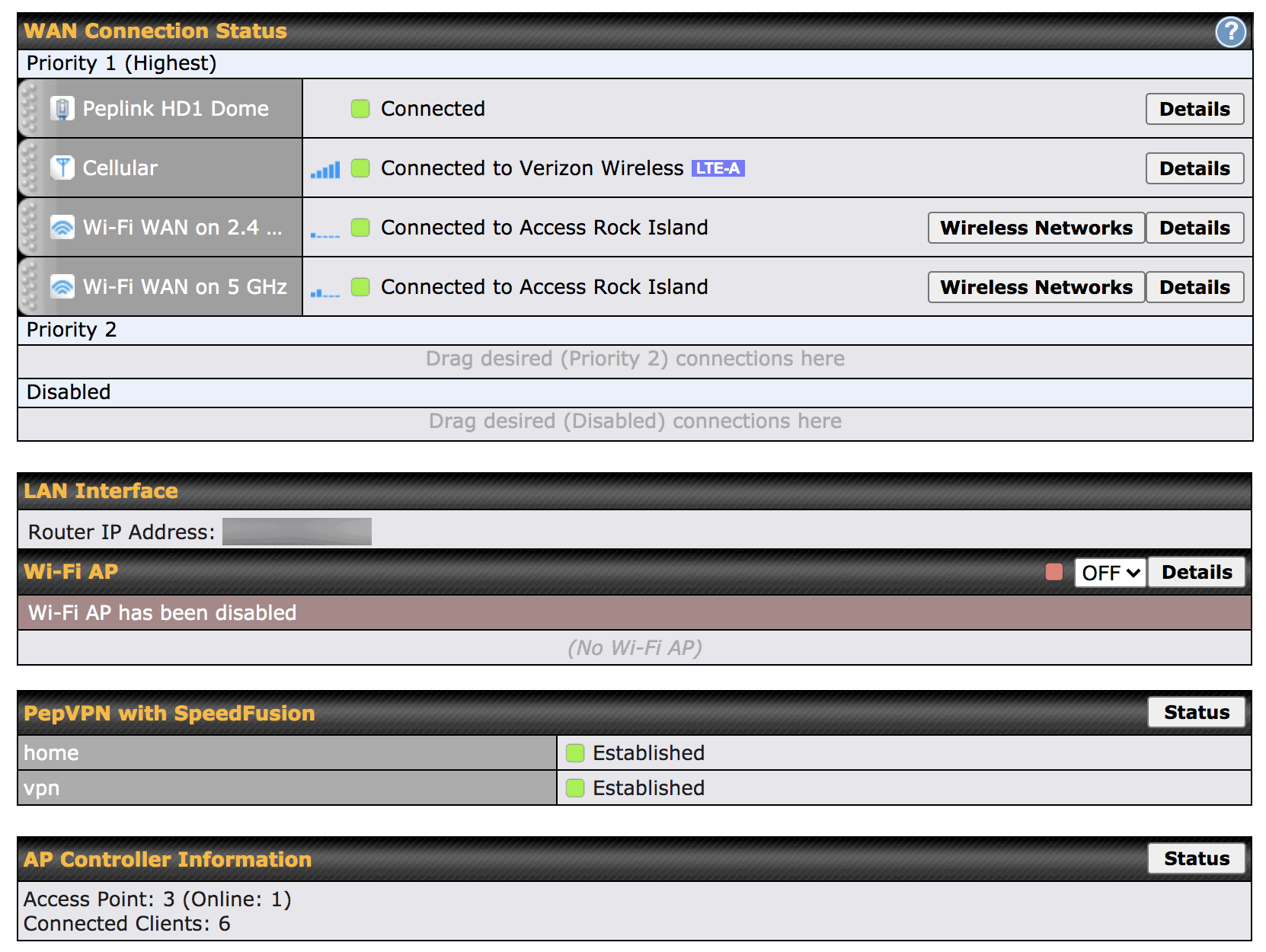
Internet Defined
I find that defining what “having Internet” means is pretty important when scoping out a new system for myself or a client. It means very different things to each person or setup, and can be very simple, or very complex. For me, it means a few things:
- On-board WiFi network offering 2.4Ghz and 5Ghz bands and both a private and guest network
- Managed network – similar to what I wrote about in Managing internet usage on your boat, I want my networks to have priorities for various devices, and ensure I always have connectivity for critical things.
- LTE internet source – one of my sources for internet connectivity will be from LTE SIM cards, and I would like to have the ability to switch between at least 2. I do not need the ability to have two active all the time. I need the ability to control roaming, which SIM is in use, and to set bandwidth/usage alerts.
- WiFi internet source – my backup source of internet is 2.4Ghz/5Ghz remote WiFi networks. I need to be able to connect to various networks that I see, with or without passwords, and boost them so I can use them aboard.
- Ethernet ports – certain critical items need to be directly cabled into my local network so that they have always on access both to the internet, but also to local devices for higher speed transfers.
It seems simple to define this, but it helps a lot in understanding what devices and solutions you can use. In particular, the 2.4/5Ghz WiFi bands seem to be something people still overlook, even given my Marina WiFi is hard article. Many routers only provide 2.4Ghz which is, frankly, inadequate for most boats today.
I do not have satellite internet anywhere in my list, as I am not going offshore, nor do I need internet in very remote locations like Princess Louisa Inlet or the like – there I rely on my Garmin inReach to send/receive text messages for safety, and the rest of the time I use my local WiFi network for on-boat stuff, and enjoy the view/location. The monthly cost for most of the satellite systems is pretty high, and the bandwidth you get as a result is pretty low for my use cases.
What I chose
- Peplink MAX Transit – provides 2.4Ghz/5Ghz local WiFi, dual SIM LTE internet, WAN port, LAN port. I’ve used Peplink products for a long time, and the MAX Transit for the last few years. It has the best feature-set, software that you can do just about anything with, has tons of power, and is extremely reliable.
- MikroTik Groove – for grabbing remote 2.4Ghz/5Ghz WiFi signals and piping them to the WAN port on the Peplink. I’ve used the Groove in both plastic and metal for all of my own installations, as well as many clients, and while it is hard to configure, it is the best solution to grab remote WiFi signals on both bands.
- weBoost amplifier – I have been using the Drive 4G-X for several years, but recently have been testing the new Drive Reach. Boosters provide a huge advantage when in remote areas both for the Peplink router, and any cell phones nearby.
- Wilson outdoor LTE antenna – based on my testing last year, I still think this is the best performing marine-grade antenna available.
- TRENDnet industrial switch – this provides Ethernet ports to systems that require them via the LAN port on the Peplink router.
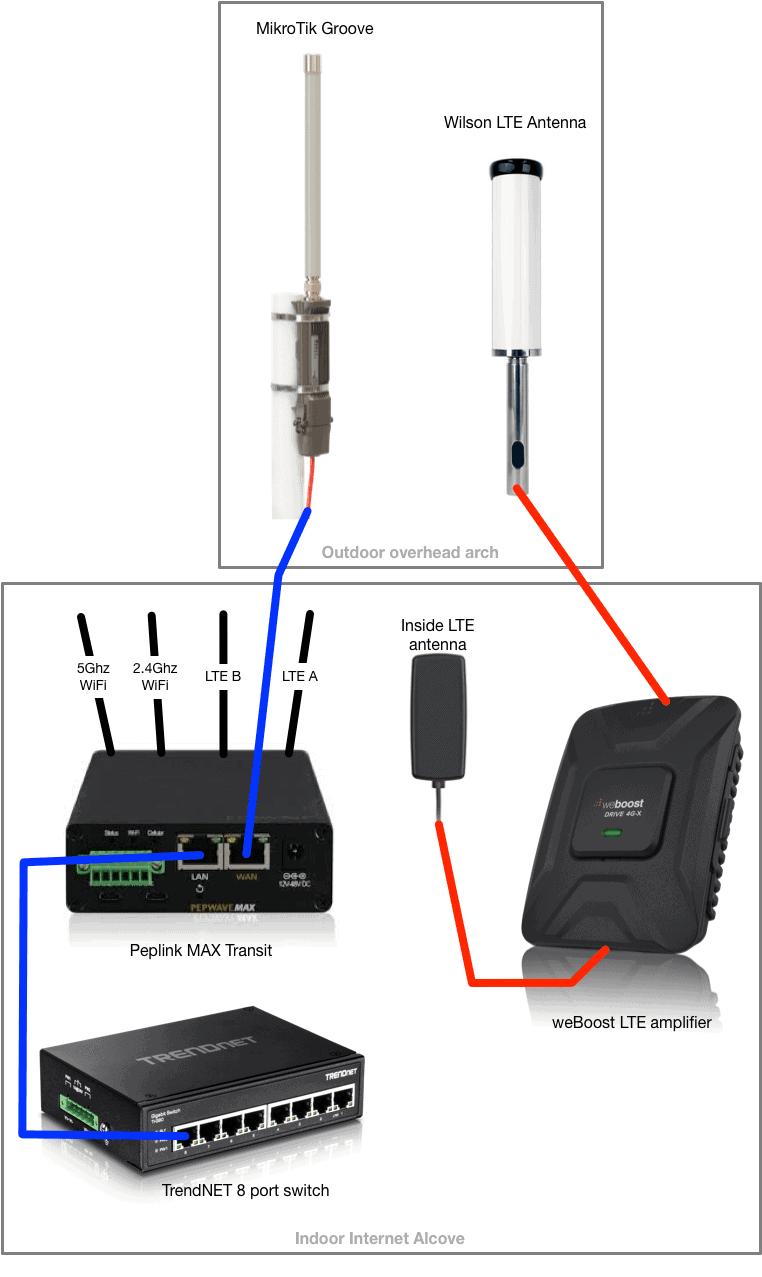
Improvements
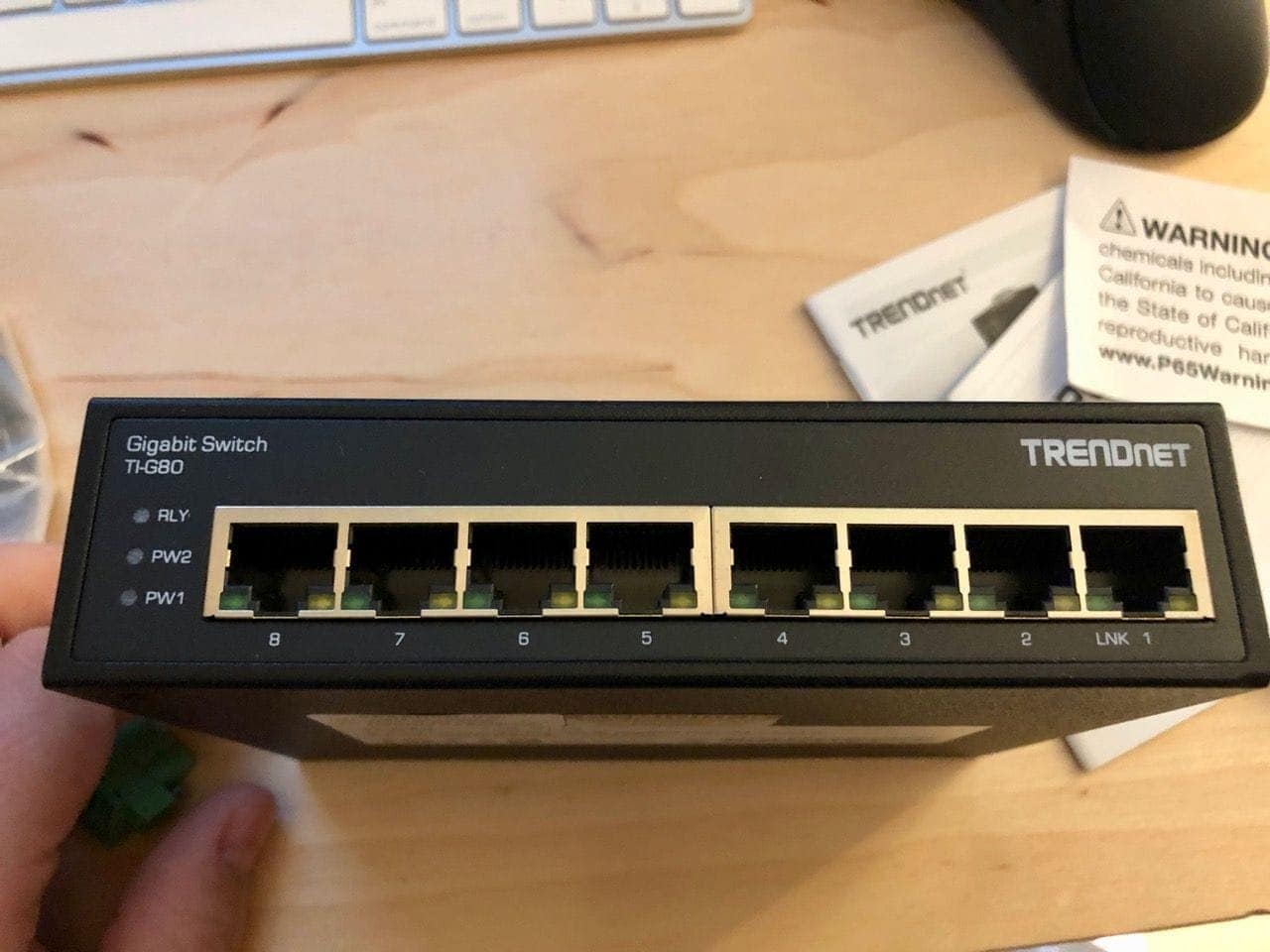
TRENDnet switch
On previous boats, I used products from several other companies which were able to run on DC power, but had some heat and performance issues. The TRENDnet switch runs off of DC power too, but can take two power sources for redundancy, and is made for “industrial” purposes. It has 8 gigabit ports which work very well, and have never had any performance issues.
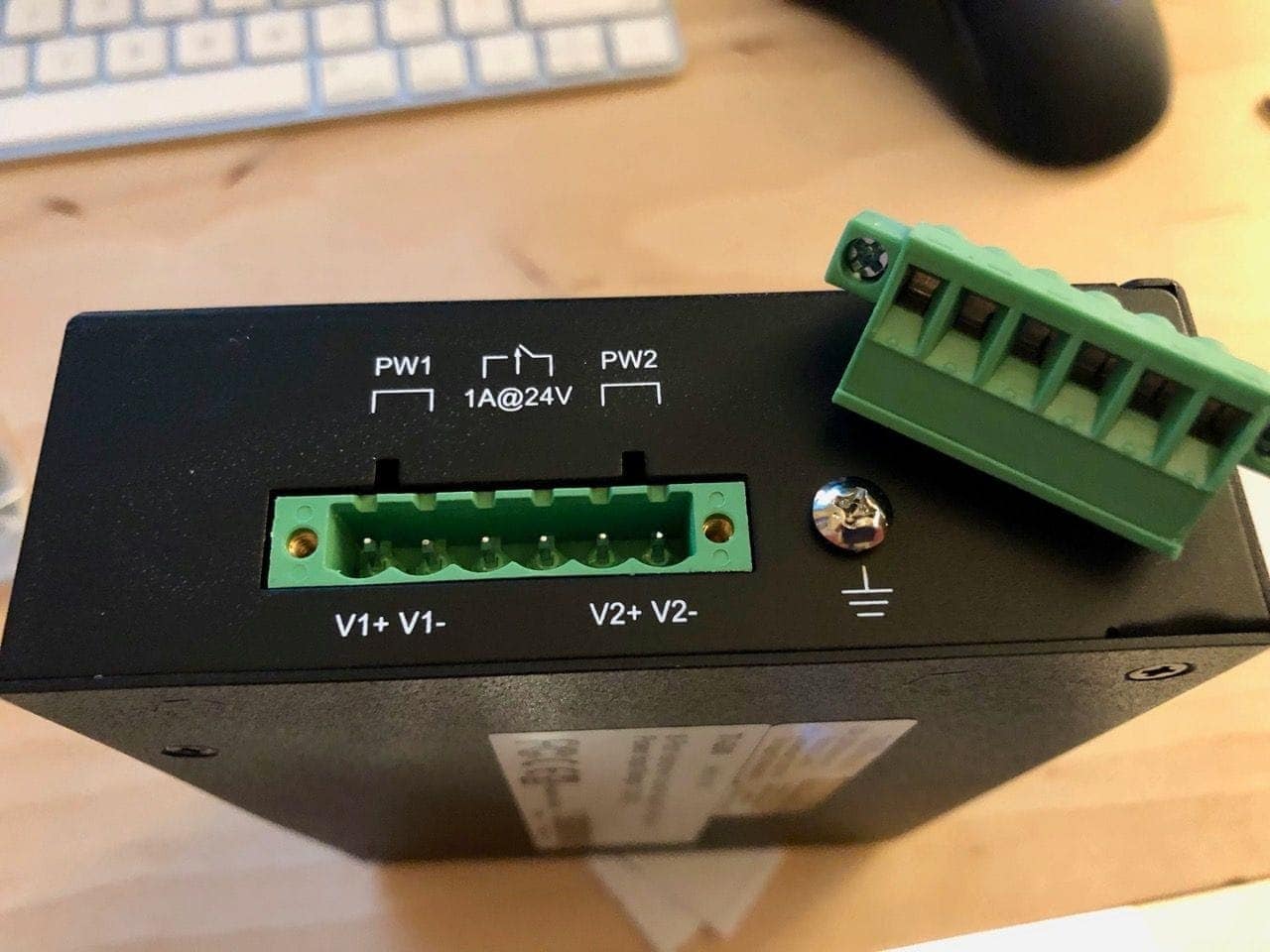
This switch has performed very well the last 10 months. It has been in both the cold and heat, with lots of vibration and movement, along with devices coming and going. I have a second one in use for my Furuno network which transmits far more data while underway, and have had zero issues with that one as well.
Wilson LTE antenna
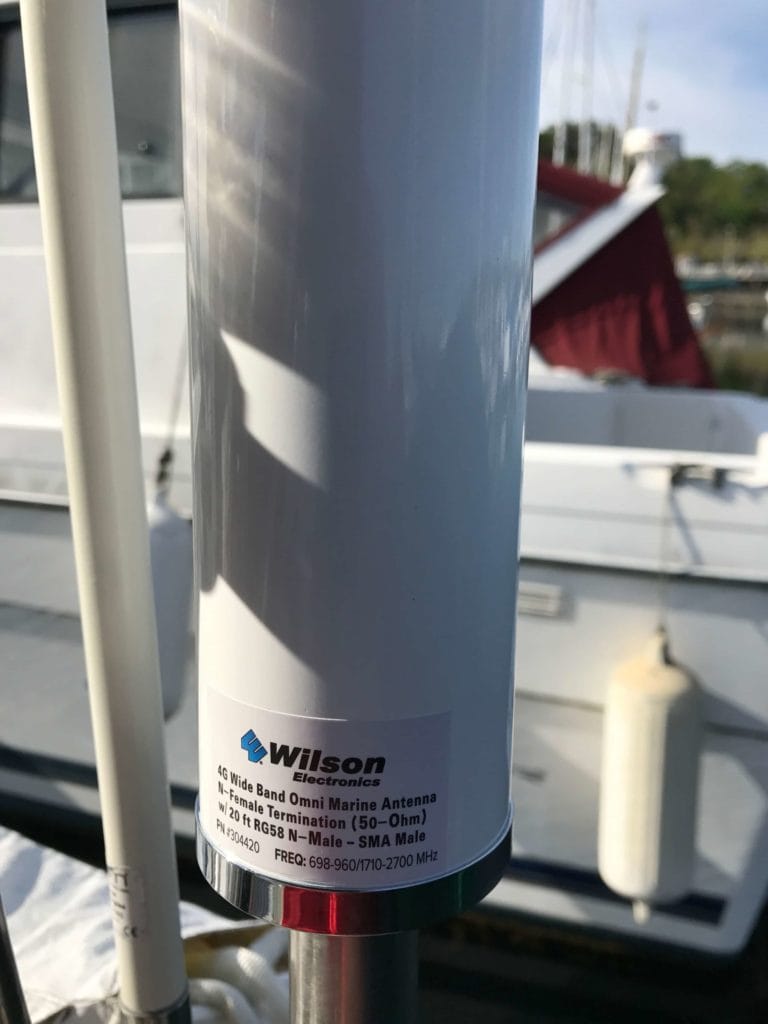
This isn’t a new piece of equipment, but I have made it my primary choice after a ton of testing last year with various other types of antennas. Since then, I have tried a few other antennas, but none of them have been built as well as the Wilson. It has an excellent marine mount, which makes it very easy to install, and very stable. The performance from the antenna is excellent – a new-fangled antenna with an additional 1dB isn’t worth the poor mounting or additional cost. ?
weBoost amplifier & internal antenna
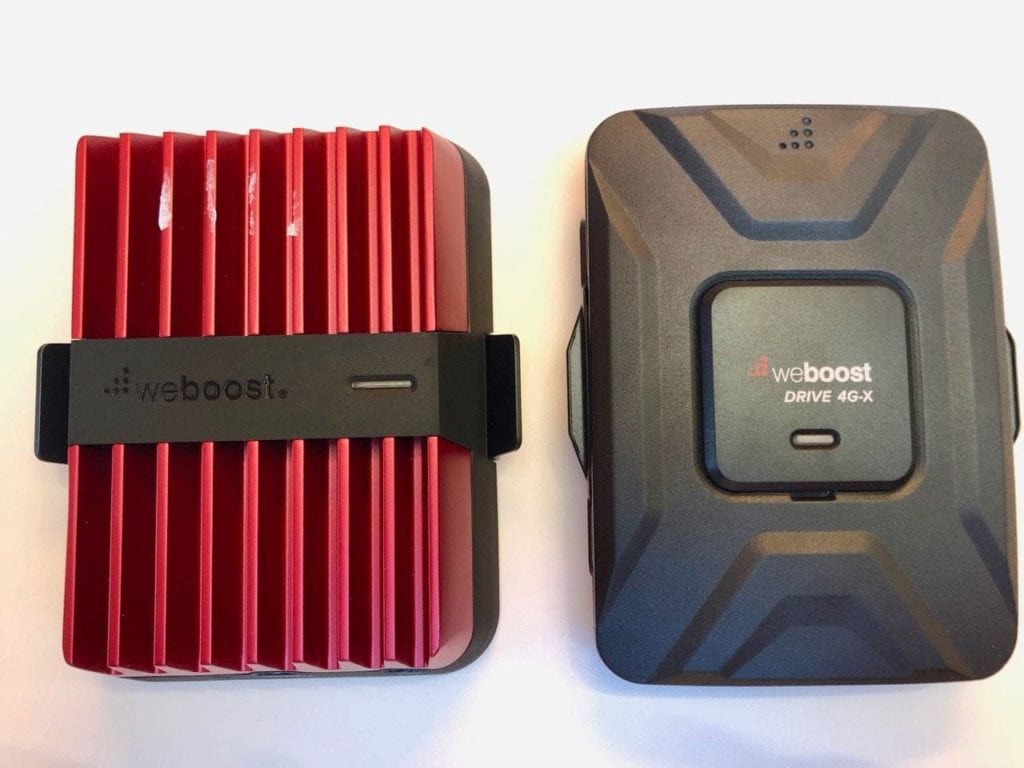
I have used the weBoost line of amplifiers from Wilson for a long time. The Drive 4G-X has been the best choice for almost 5 years, but a few months ago Wilson released the Drive Reach, which I have been testing with good results. The Reach has over 3x the power as the 4G-X for connecting to remote towers, and double the power for the inside antenna. As a result, it has a big heat sink, and a larger power supply. I hope to have more extensive testing completed soon.
I’ve also been playing around with various internal antennas to provide better coverage not only for the Peplink router, but nearby cell phones. More on this testing soon as well. ?
So far, these improvements have provided a more reliable and powerful internet setup for all of the trips we’ve taken on Rendezvous, and even while at the dock.
📡 by purchasing products I link to, you help me keep my site running, and afford to buy and test more stuff. Thanks for helping support SeaBits!
Archived Comments
These are read only comments from the old system. Scroll down to participate in SeaBits Discussions, our new interactive forum attached to each article.
Grant Jenkins
August 17, 2019 at 11:55 pm
Hi Steve – so, no more Netgear LB1120? I think thats what you recommended in your last article….
I’m not sure from your diagram how the LTE signal gets from the antenna to
the router – the Peplink supports 2 Sim cards, but there’s no hard-wired
connection to the antenna or booster?
- Steve Mitchell
August 18, 2019 at 5:26 am
Hi Grant,
The Peplink router is the one I always recommend for those who have the budget. The LB1120 + MikroTik hAP is the more cost effective way to do something similar, but without many of the features that the Peplink has. It also requires a lot more know-how to get the MikroTik+Netgear working and configured, where the Peplink is pretty plug and play. I still recommend that one too for those who would like that route/feature set/budget.
I have found that the best way to use a weBoost amplifier is to have the inside antenna as close as possible to the factory Peplink antennas. These amplifiers are not meant to be wired directly into a router, and will damage things if connected that way. weBoost sells an in-line amplifier, but there are significant disadvantages to using that setup, which I covered in https://seabits.com/best-lte-antenna-booster-boat/
Having the weBoost inside antenna also gives you a second benefit of being able to use a cell phone nearby and have it boosted. - Grant Jenkins
August 18, 2019 at 12:55 am
OK Thanks Steve – so, when you say the Peplink is pretty plug and play – does that include configuring auto fall-over from LTE to WiFi or vice versa? I gave up trying to understand how to programs scripts for my Mikrotik router and now just manually swap Ethernet cables from my Wifi source and LTE source into the WAN connector… it works, but hardly something I would brag about…
David Geller
August 18, 2019 at 2:34 am
Another great article. This time, though, I fear it’s going to cost me a ton of $$$ as I plan to upgrade what I’ve got to something just like this. My only gripe remains with the Groove. They have a great new iOS app but, for the life of me, I can’t figure out how to use it to select remote APs. And their web-based UI is ok, but still not very user friendly.
Labatt s/v/ Pelican
August 30, 2019 at 10:53 pm
Great article! You spend a lot of time in this article and prior articles talking about antennas. I think the antenna quality and placement are more critical for WiFi (and cell) than the actual boat-side station type.
I have both a Microtik Groove 52AC and a Bullet2 onboard. The Bullet2 is wired through LMR400 cable to our second spreader (maybe about 40 feet?). My Groove has the antenna directly attached and is located on the top of our bimini. I also changed out the cheap antenna on the Groove with a 9db Wifi2b9 2.4/5.8 antenna (http://www.scan-antenna.com/product/wifi2b9) (these are available from a distributor – http://aepsales.com/ – on the east coast for < $100 - I have no relation to them - make sure to get the right mounting brackets too as these have a euro style mount). I always get a much better connection on the Groove (comparing 2.4 vs. 2.4), most likely for two reasons. First, the antenna for the Bullet2 has the LMR400 cable. While this is great cable, it has signal loss vs. being directly connected. Even with a better antenna, it will still not perform as well as a unit with a directly connected antenna. Second, the placement. Because the vertical beam width of the antenna is not as wide as the horizontal beam, the closer I am to the shore station the more likely it is to be on the fringe of my beam since my antenna is on the second spreader. This causes degradation. In addition, at times the mast gets between the antenna and the shore station, effectively blocking the signal. I originally thought that placing it high up would help (and it probably would in specific situations - on the hook, boat station directly connected to the antenna, mast not between the shore station and the boat station, etc.) but it did not. That's why, when I added, the Groove, I took lessons learned and used a direct antenna connection and also placed it in a spot that had nothing between it and a shore station. I can also say that signal strength increased a measurable amount when I replaced the stock antenna on the Groove with the Scan antenna. And I have to say that - as you say too- the Groove is definitely more complex to configure, but with the added 5.8GHz radio + the WiFi options you can usually get access to more WiFi units (including older units the Bullet no longer supports for security reasons) with better/faster connection rates and bandwidth. I also have the WeBoost DriveX unit with a Wilson antenna and LMR400 out to my bimini top. Love it. Sad to see they have a new unit as the wife won't let me spend more money on this until we spend money on other things first lol.
- Steve Mitchell
August 29, 2019 at 5:15 am
These are all great points, but I think the most important one is the one you also highlight a bunch – antenna location and distance. I try to highlight this in some of my other posts, but perhaps this warrants a dedicated article just discussing the pros and cons. Many people assume the higher the better with antennas both for WiFi and LTE, and I think this mentality comes from having heard this for line-of-sight things like VHF radios.
While having a WiFi antenna higher up the mast might help if you’re trying to reach a remote station, I don’t think that people do that as much anymore. It used to be 10 years ago that everyone who had internet while afloat, who wasn’t a rich mega yacht owner and had a satellite, got it via finding a WiFi source on shore, usually an open network (because so many people had those and didn’t mind!) and definitely 2.4Ghz. There were whole swaths of products including many based on the Bullet series from Ubiquiti that advocated height to get the remote signals. I’m sure it helped a bit, but you pointed out a big flaw on a sailboat which I’ve seen many times – mounting the antenna somewhere up the mast where at one point, when the boat rotates, the antenna is blocked by the mast.
Amplifiers and cables are all good things to consider, but to your overall point – the location and quality of the antenna is critical. Ensuring you have a good one for WiFi and LTE, have picked an appropriate location not too far away, and use quality cabling will all result in a good signal.
As for the specific antenna you have paired with the Groove – I am using the Altelix available here https://amzn.to/2MLCKXm which has vastly improved the performance over the stock one, and it is dual band as well.


